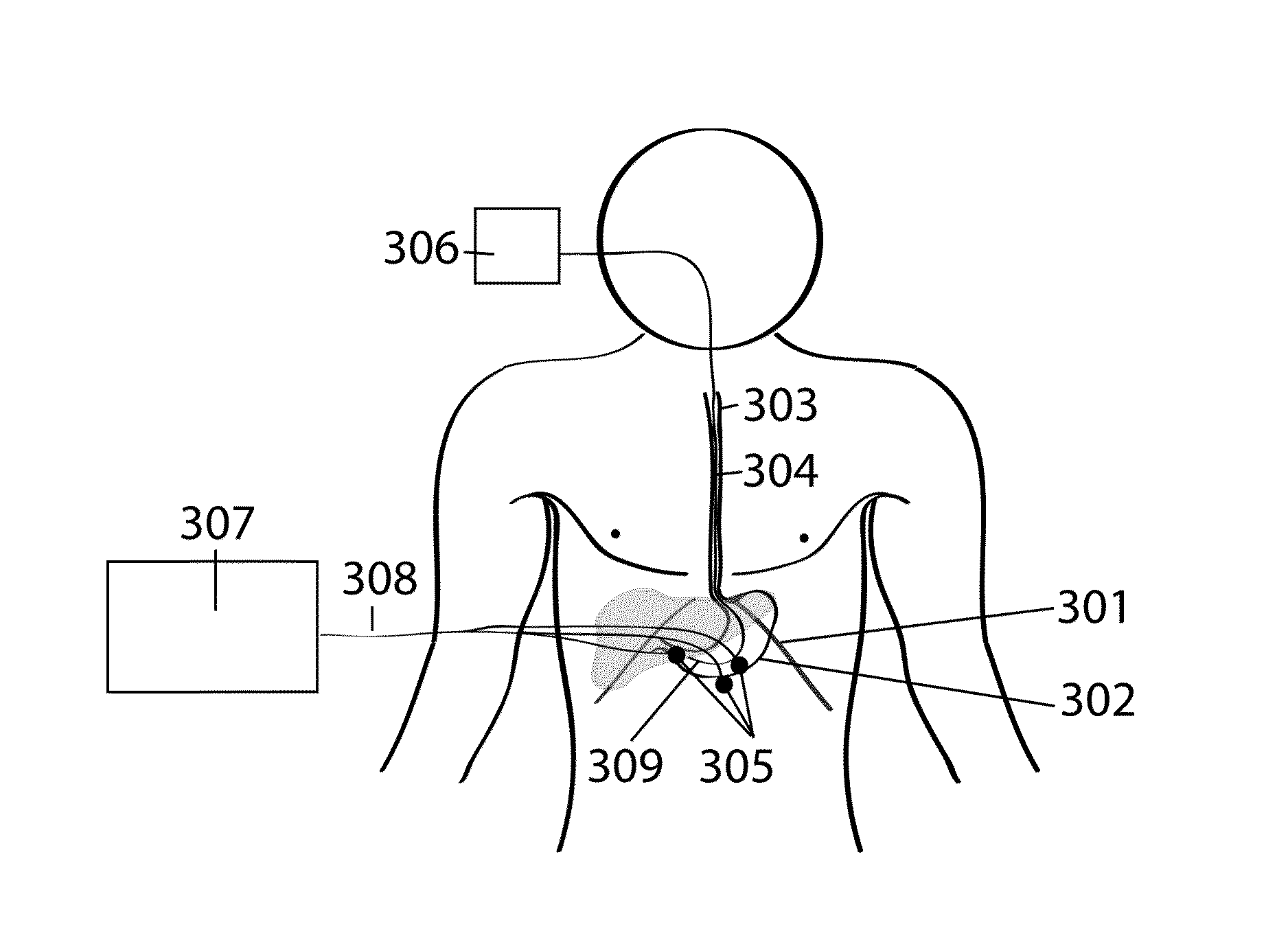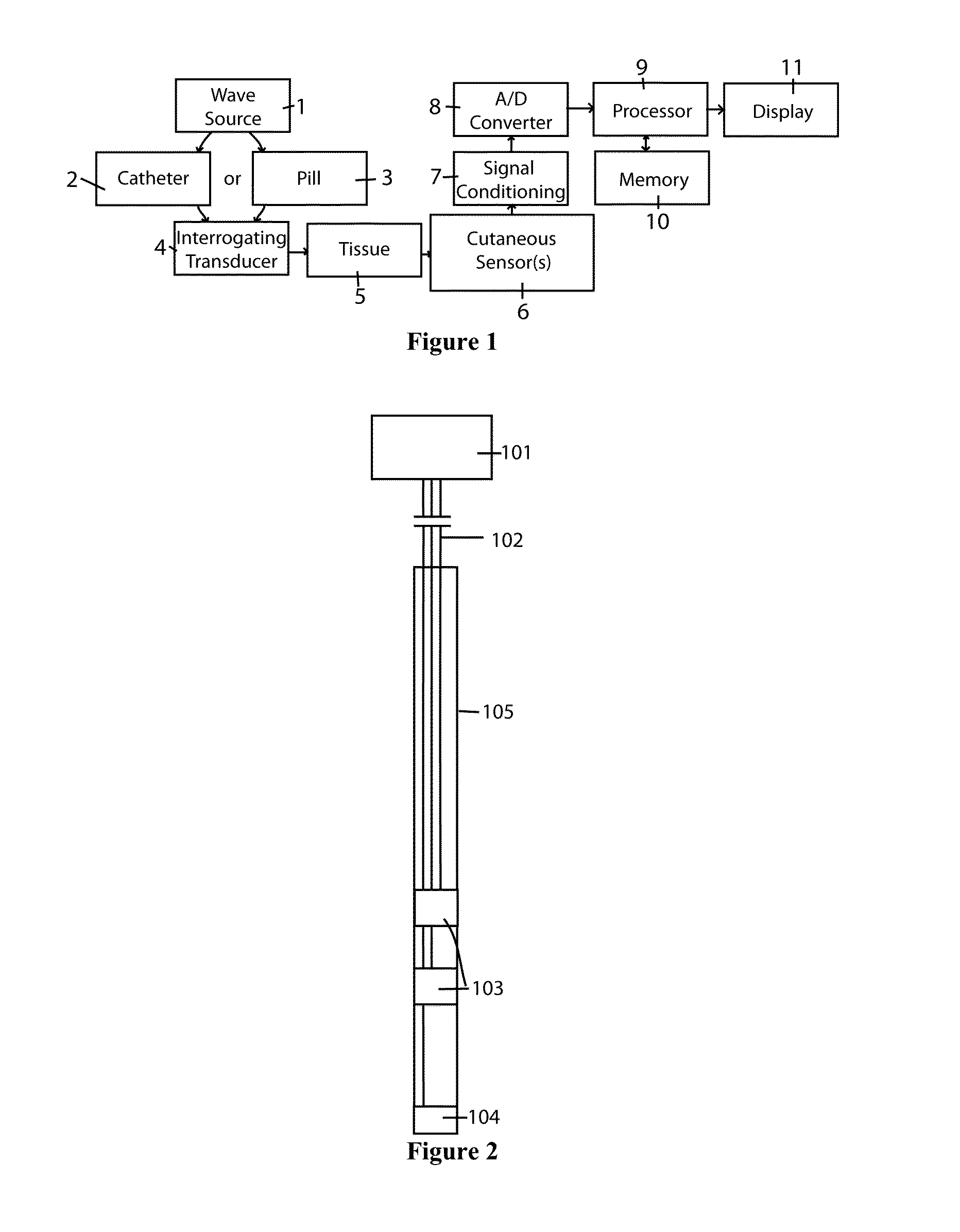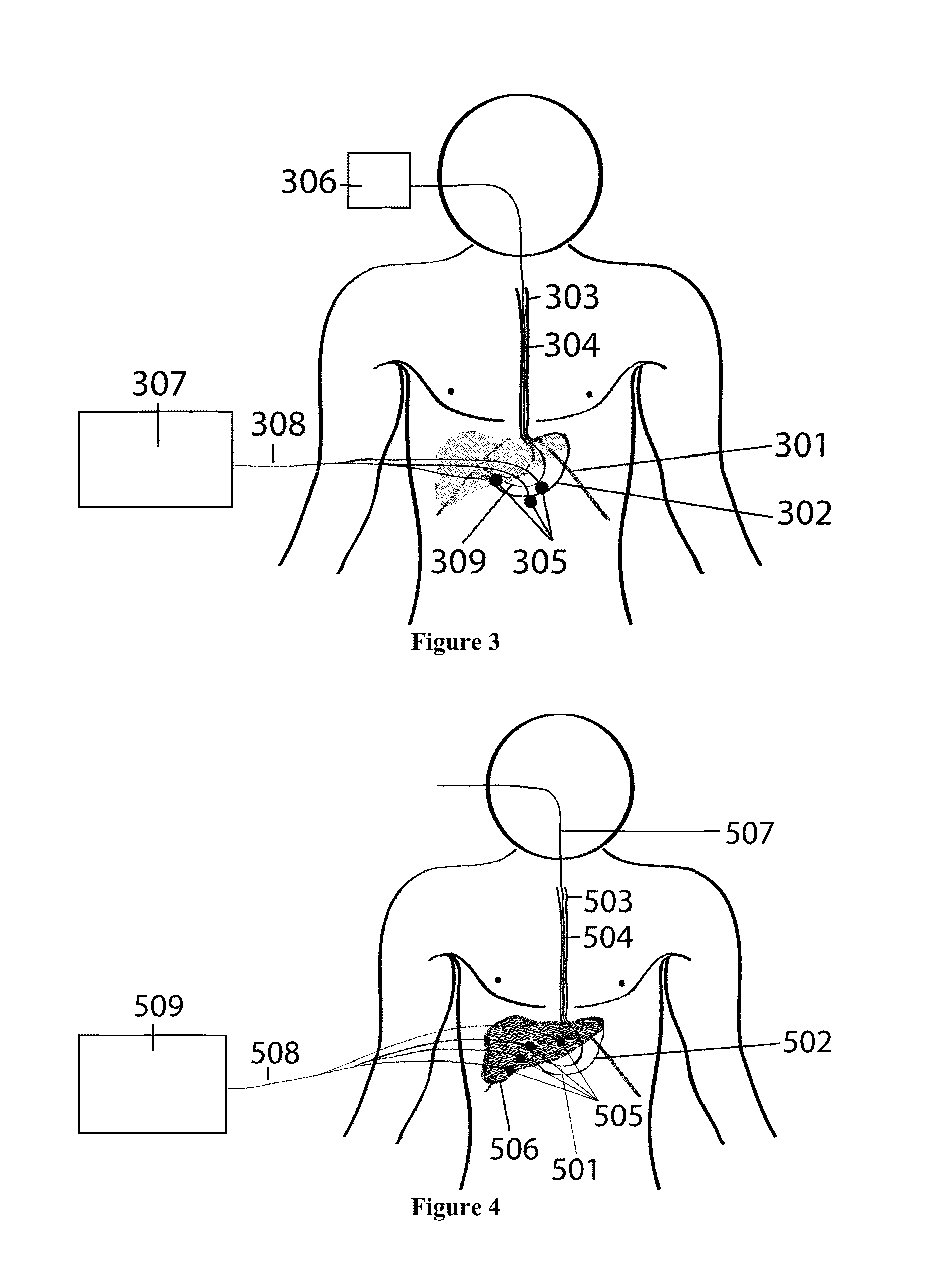Device and method for monitoring internal organs
a technology for internal organs and devices, applied in the field of minimally invasive diagnosis of conditions within the body of an animal, can solve the problems of inability to present a reliable dynamic picture of the functional characteristics of the organ, inability to carry out ambulatory testing, and inability to meet the needs of ambulatory testing, so as to minimize the risk of infection, reduce the cost, and minimize the effect of discomfort and/or side effects
- Summary
- Abstract
- Description
- Claims
- Application Information
AI Technical Summary
Benefits of technology
Problems solved by technology
Method used
Image
Examples
examples
[0062]Materials and Methods: TIIM Capsule Design: For the present study the TIIM transducer was implemented as a gastric retentive pill, although it could also be positioned on the tip of a transnasal or transoral catheter. Each custom-designed TIIM transducer contained a miniature, battery-supplied, 50 kHz, 1.5 V oscillator (Linear Technology, Milpitas, Calif., USA). The length of the transducer was 18 mm with a diameter of 11 mm. It was embedded in dry, biocompatible super-absorbent polymer granules contained in a nonwoven permeable polyvinyl alcohol mesh (20-gsm) inside a size AAA DB capsule (Capsugel, Morristown, N.J., USA). The polymer granules swelled to 30-40 times their dry size in gastric liquid. The parameters of the expandable capsule were chosen to have minimal impact on the stomach and to maintain ease of swallowing, while still being able to ensure gastric retention, even during inter-digestive periods. The permeable gastric-retentive capsule design has self-disintegra...
PUM
 Login to View More
Login to View More Abstract
Description
Claims
Application Information
 Login to View More
Login to View More - R&D
- Intellectual Property
- Life Sciences
- Materials
- Tech Scout
- Unparalleled Data Quality
- Higher Quality Content
- 60% Fewer Hallucinations
Browse by: Latest US Patents, China's latest patents, Technical Efficacy Thesaurus, Application Domain, Technology Topic, Popular Technical Reports.
© 2025 PatSnap. All rights reserved.Legal|Privacy policy|Modern Slavery Act Transparency Statement|Sitemap|About US| Contact US: help@patsnap.com



